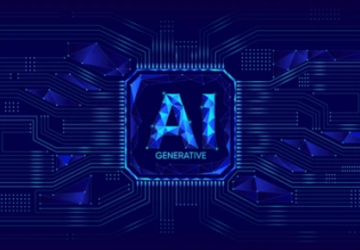
Industry 4.0 signifies a profound transformation in industrial processes, incorporating advanced technologies such as digital twins and conversational artificial intelligence (AI). This convergence promises to significantly enhance operational efficiency for businesses. This article explores the functionalities of conversational AI integrated into digital twins and their impact on industrial performance.
Understanding Digital Twins and Conversational AI
Digital twins are virtual replicas of physical entities, encompassing products, processes, or systems. They enable real-time simulation, analysis, and optimization of performance, facilitating decision-making and predictive maintenance. Conversational AI encompasses technologies capable of understanding and generating natural language, allowing seamless interactions between humans and machines through chatbots, virtual assistants, or voice interfaces.
Synergy Between Digital Twins and Conversational AI
Integrating conversational AI with digital twins offers several advantages:
- Enhanced Human-Machine Interaction: Conversational interfaces simplify access to complex data from digital twins, allowing operators to ask questions in natural language and receive precise answers without requiring extensive technical expertise.
- Optimization of Industrial Processes: Through real-time monitoring and predictive analysis, digital twins assisted by conversational AI can anticipate failures, suggest adjustments, and optimize operations, thereby reducing downtime and costs.
Concrete Use Cases
Several applications illustrate the effectiveness of this integration:
- Predictive Maintenance: Companies utilize voice assistants to diagnose real-time malfunctions. For instance, an operator can inquire about the status of a specific machine, and conversational AI, leveraging the digital twin, provides a detailed analysis and action recommendations.
- Immersive Training: Interactive digital twins, combined with conversational interfaces, offer virtual reality training environments where employees can interact with realistic simulations, ask questions, and receive personalized instructions.
- Supply Chain Management: Conversational interfaces enable real-time tracking of inventory, shipments, and supplies. A manager can request information on stock levels or delivery times, and AI provides responses based on data from the digital twin.

Challenges and Considerations
Despite its advantages, integrating conversational AI with digital twins presents challenges:
- Data Security and Confidentiality: Connecting intelligent systems exposes companies to cybersecurity risks. Implementing robust security protocols is essential to protect sensitive information.
- Complexity of Technological Integration: Merging conversational AI with digital twins requires advanced technological infrastructure and interoperability between different systems, which can represent a significant investment.
- Employee Acceptance: Adopting new technologies may encounter resistance. Training staff and demonstrating tangible benefits are crucial to ensure a smooth transition.
Conclusion
Integrating conversational AI into digital twins represents a major advancement for Industry 4.0, offering more natural interactions, process optimization, and informed decision-making. Companies that embrace this synergy can expect significant improvements in operational efficiency and enhanced competitiveness in the global market.
By adopting these technologies, businesses position themselves at the forefront of industrial innovation, ready to meet the challenges of tomorrow.
Better understand the possibilities of SmartShape?
Schedule a demo

